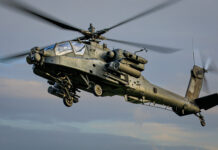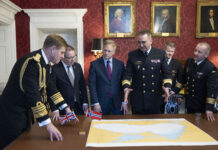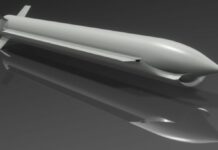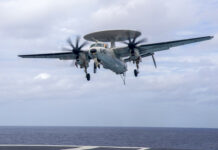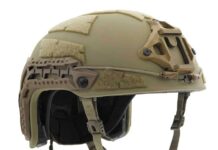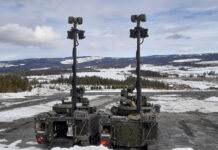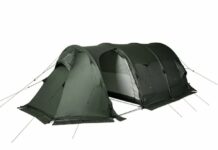According to a Norwegian Defence Materiel Agency (NDMA) press release, the agency signed a contract for the delivery of an additional three Ground Master 200 Multi Mission (GM200 MM/C) digital counter-battery radars from Thales Netherlands.
The contract, valued at NOK 460 M (EUR 44.3 M), has been signed with the NDMA’s Dutch counterpart, the Defense Materiel Organization (DMO), as a Government-to-Government agreement. The DMO has a contract in place with Thales Netherlands for procurement of radar systems which includes options to allow other NATO members to utilise the contract. The new Norwegian contract is a supplement to a previous contract for five radars of the same type bringing the total value, for all eight radars, up to NOK 2 Bn (EUR 192.9 M). All eight radars are scheduled to be delivered in 2025.
The GM200 MM/C radar can detect and track rockets, artillery shells, mortar bombs, and use the radar tracking data to calculate both the predicted impact point of the incoming fire, as well as the fire position. When used in cooperation with artillery systems, such as the Norwegian Armed Forces’ Hanwha Defense K9 155 mm howitzers, this can provide the Norwegian armed forces with a means to conduct rapid and accurate counter-battery fire.

The radar is a digital 3D active electronically scanned array (AESA) radar. This type of radar allows the radar beam to rapidly be steered and pointed electronically. The fact that the GM200 MM/C is digital also means that future upgrades, such as the addition of new functionalities, can in many cases be implemented as software upgrades.
In addition to its counter-battery role, the radar can also detect and track airborne targets, such as fixed-wing aircraft, helicopters and drones, and is able to classify detected contacts by type. Similar to the counter-battery mission, this information can be used to provide targeting data to air defence systems.
According to the Norwegian Armed Forces, the new radars provide better range, mobility, protection and precision than the previous counter-battery radars in Norwegian service, and will be an important contribution to the protection of Norwegian military forces and infrastructure.
The Netherlands DMO has highlighted the two Norwegian contracts as a good example of procurement cooperation between NATO members, and has stated that other NATO countries have expressed an interest in using the existing DMO contract.
Thomas Nielsen




